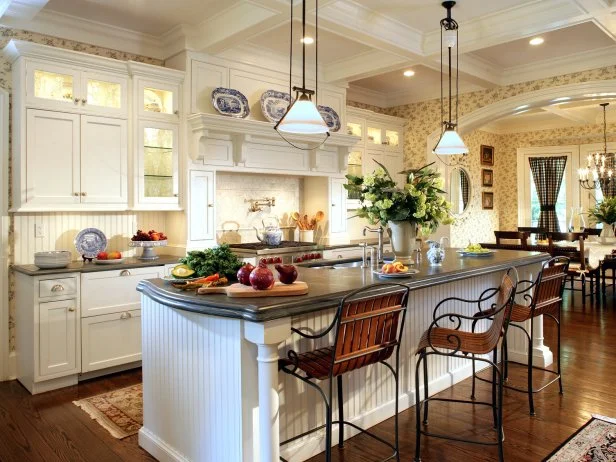Essential Factors to Consider When Picking Legs For Cooking Area Island
Choosing the suitable legs for a kitchen island involves a mindful analysis of several factors that can significantly affect both performance and aesthetic appeal. Amongst these, the option of product plays a critical role in making certain longevity, while the style should enhance the existing decoration. Factors to consider such as height and weight support are crucial for stability and convenience. As we check out these elements, it ends up being clear that each decision can have far-ranging implications for the total kitchen area experience. What subtleties should be thought about in each of these categories to accomplish the ideal equilibrium?
Product Options
When selecting legs for a kitchen area island, recognizing the various material alternatives is important for accomplishing both aesthetic charm and structural honesty (Legs For Kitchen Island). The choice of material substantially affects not just the resilience of the island however additionally its general layout and capability
Steel legs, usually made from stainless steel or functioned iron, add a commercial and modern-day feel while making sure longevity and security. These products are resistant to wear and can support substantial weight, making them ideal for bigger islands.
An additional alternative is crafted materials, like MDF or plywood, which can be much more affordable while still offering a series of coatings. Nonetheless, they might not supply the exact same level of security as strong wood or steel. Products such as acrylic or glass can create a modern look, though they may call for additional assistance to make sure stability.
Inevitably, the choice of material for cooking area island legs ought to align with the wanted performance and the total theme of the cooking area.
Design and Design

When taking into consideration design, the form and coating of the legs are important. Conical legs can give a feeling of agility and style, while thicker, more durable legs can share toughness and security. In addition, the coating-- be it repainted, tarnished, or all-natural-- must match the cabinets and counter top materials to create a unified appearance.
Moreover, the design of the legs can additionally mirror individual taste. Customized or decorative legs, such as those featuring detailed makings or special geometric forms, can work as prime focus, including personality and character to the kitchen. Ultimately, the appropriate selection will not just boost functionality but likewise elevate the aesthetic allure, making see here the cooking area island a standout function of the home.
Height Considerations
Choosing the appropriate elevation for kitchen area island legs is crucial, as it directly influences both performance and convenience. The basic height for a kitchen area island typically ranges from 36 to 42 inches, straightening with common counter top elevations.

It is also vital to account for users' choices and heights. Tailoring the elevation can guarantee a comfortable experience for all relative, making the kitchen island an extra delightful and practical area.
Weight Assistance
Making sure sufficient weight assistance for kitchen area island legs is essential for both safety and security and capability. The kitchen island usually serves multiple functions, consisting of cooking, eating, and extra storage space, necessitating a robust assistance framework. When choosing legs, it is critical to think about the total weight capacity needed based upon the island's meant usage and the materials that will certainly be positioned on it.
The selection of product for the legs plays a considerable duty in their weight-bearing capabilities. Solid timber, metal, and durable compounds generally give exceptional stamina contrasted to lighter materials. Furthermore, the layout of the legs-- whether they are right, tapered, or have a pedestal form-- can influence their capacity to disperse weight successfully across the structure.
Constantly consult the producer's specs relating to lots restrictions to make sure that the legs can maintain the designated weight without jeopardizing safety and security. In recap, picking kitchen area island legs with ample weight support is essential for developing a safe and useful culinary space.
Installment and Upkeep
Correct setup and upkeep of kitchen area island legs are crucial for guaranteeing longevity and security. This often entails securing the legs to the island base making use of suitable bolts, guaranteeing that the legs are degree and aligned.
When set up, normal maintenance is essential to preserve the honesty and appearance of the legs - Legs For Kitchen Island. For wooden legs, routine cleaning with a moist towel and application of suitable timber polish can protect against moisture damages and keep their finish. Metal legs might require a gentle cleansing solution to remove grease and gunk, adhered to by a completely dry cloth to avoid corrosion formation
Furthermore, evaluate the legs regularly for indicators of wear or damage, such as cracks or loose joints. Tightening screws or bolts as needed can likewise extend the life-span of the click to investigate legs. By sticking to these installment and upkeep techniques, house owners can make certain that their cooking area island continues to be sturdy and aesthetically appealing for years to come.
Conclusion

Aesthetic comprehensibility is extremely important in selecting the style and style of legs for a cooking area island, as these components greatly influence the general atmosphere of the room. Tapered legs can offer a feeling of lightness and sophistication, while thicker, extra robust visit the site legs can convey strength and stability.Choosing the suitable height for kitchen area island legs is critical, as it straight impacts both functionality and comfort. In summary, selecting cooking area island legs with appropriate weight assistance is essential for developing a useful and risk-free cooking area.
In final thought, picking legs for a kitchen island requires cautious factor to consider of different variables, consisting of material choices, design, elevation, weight support, and installation.